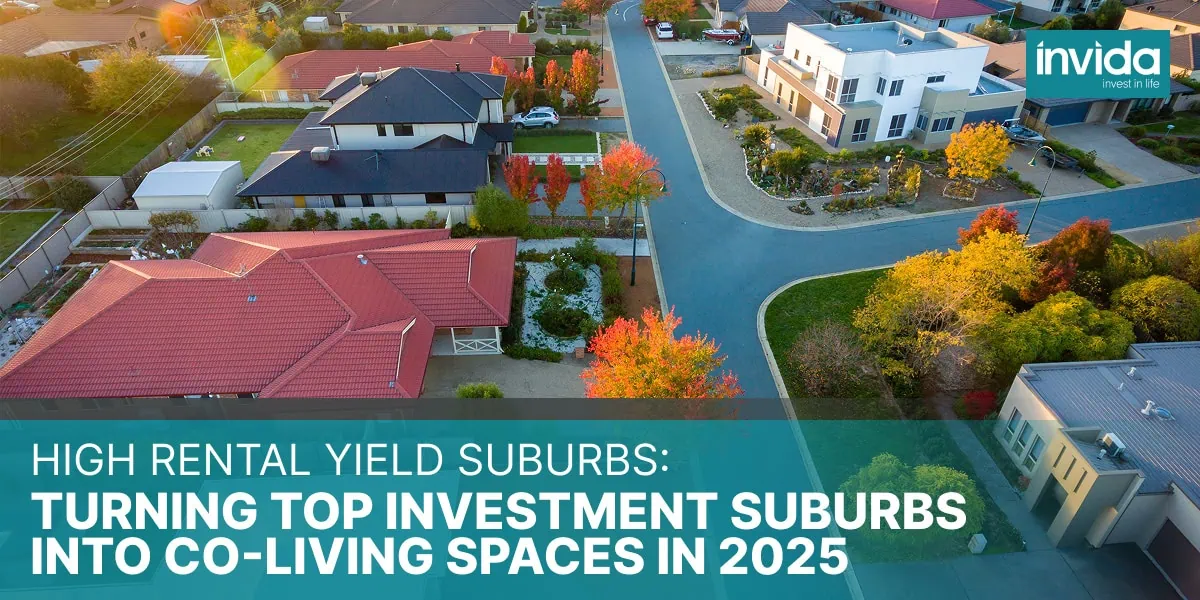Co-living housing in Australia is fast becoming a smart solution for both tenants and investors. With affordability pressures and a shortage of rentals, many are turning to co living houses as a way to create affordable spaces while boosting returns.
For investors, the appeal is clear: instead of collecting a single rent from a whole home, a co-living house delivers multiple income streams under one roof. These properties can achieve 6–9% gross yields, often 1.5 to 2 times the income of traditional rentals. But not all setups perform equally – some configurations earn far more.
Why Co-Living Housing Outperforms Traditional Rentals
A standard 3 to 4 bedroom home leased to one family might bring in $600 a week, equating to a 3 to 4% yield in many metro markets. By contrast, converting that same property into four private rooms with en-suites can generate around $1,280 a week. That’s over $66,000 a year. This simple change highlights the advantage of co living houses: more rent from the same footprint, while meeting strong demand for affordable housing.
Is Co-Living Right for You?
We’ll walk you through our proven co-living investment model, answer your questions, and show you how to maximise rental returns.
Co-Living House Configurations That Earn More
When it comes to co-living housing, not every setup delivers the same results. The number of rooms, the design of the property and the way it’s managed all play a direct role in how much income you can generate. By looking at proven co-living house plans and the rental rates they achieve, investors can see how different configurations (from smaller 3 to 4 room conversions to larger 5 to 6 room homes) stack up in terms of yield and long-term stability.
Co-living Housing Small Conversions (3–4 Rooms)
An easy entry point for investors is turning a suburban house into 3 or 4 self-contained rooms. In INVIDA’s model, each tenant enjoys their own bathroom while sharing kitchen and laundry facilities.
- 3 rooms at $320/week each = $960/week or nearly $50,000/year.
- 4 rooms at the same rate = $1,280/week or about $66,500/year.
On an $800,000 property, this produces a 6.2% yield compared to roughly 3.9% if leased as a single dwelling. This approach works best for investors looking for manageable scale, modest compliance and quicker setup while testing co-living house plans in the market.
Co-living Housing Medium Conversions (5–6 Rooms)
Larger returns come from purpose-built coliving houses or extensively adapted homes designed for 5 to 6 tenants. These co-living house plans are tailored for privacy, often with ensuites and well-planned communal areas.
- 5 rooms × $320/week = $1,600/week or $83,200/year.
- 6 rooms × $320/week = $1,920/week or almost $100,000/year.
On a $1.2 million property, this translates to 7–8% gross yields. Importantly, INVIDA reports average tenancy durations of 9 months in metro areas and up to 15 months in regional markets, which helps reduce turnover and management costs.
Stress-Free Co-Living with Professional Property Management

One of the biggest advantages of investing in a co-living property is that it’s relatively hands-off. With professional property management – such as the comprehensive service offered by INVIDA – every aspect of the investment is handled for you.
From tenant placement and lease management to maintenance, compliance checks and community building, INVIDA’s boutique approach ensures your property runs smoothly while maximising returns. They have a team that specialises in co-living property management. They understand the unique dynamics of multi-resident homes and how to create a harmonious living environment that keeps tenants satisfied and paying on time.
This not only boosts retention and reduces vacancy risk but also gives you peace of mind. INVIDA even offers turnkey solutions – covering furnishings, fire safety compliance, cleaning and inspections – so your co-living property is rent-ready from day one. For investors, this means you can focus on the benefits of high-yield co-living housing without the stress of day-to-day management.
What Drives Profitability for Co-living Housing Investments?
Several factors determine how successful co-living housing investments will be:
- Location: Homes near CBDs, transport or universities secure higher rents and consistent demand.
- Design: Ensuites, light-filled rooms and smart layouts from co-living house plans justify premium rents.
- Occupancy: Longer average stays (9–15 months) mean fewer costly vacancies.
- Compliance: Approvals, parking and fire safety are crucial and vary by council.
Risks & Considerations
While co-living is a lucrative investment model, it does require careful planning. Multiple tenants naturally mean more management and maintenance, but with the right property management partner, much of this workload can be taken off your shoulders.
Compliance rules also differ by state and council, yet these regulations are designed to ensure quality housing and can add long-term value to your property once approvals are in place.
Financing may sometimes be a barrier, as not every lender supports co-living housing. This, however, creates an opportunity to work with an experienced broker who understands the sector. It can also connect you with forward-thinking lenders.
With the right team behind you, these potential hurdles become stepping stones toward a stronger, more resilient investment.
How to Maximise Returns
To get the most out of co-living:
- Partner with specialists like INVIDA.
- Target high-demand suburbs with low affordable housing supply.
- Choose designs that offer private bathrooms and practical communal areas.
- Rely on an experienced property management team so no detail is missed.
Which Co-living Housing Strategy Will Work for You?
Co-living is one of the few strategies in Australia that can reliably double the income of a traditional rental. The configurations that deliver most include 4–6 room co-living houses with ensuites and value-adding services, while dual occupancy options provide balance and stability.
By following smart co-living house plans and working with experienced managers, investors can unlock higher yields while contributing to more affordable housing solutions.





